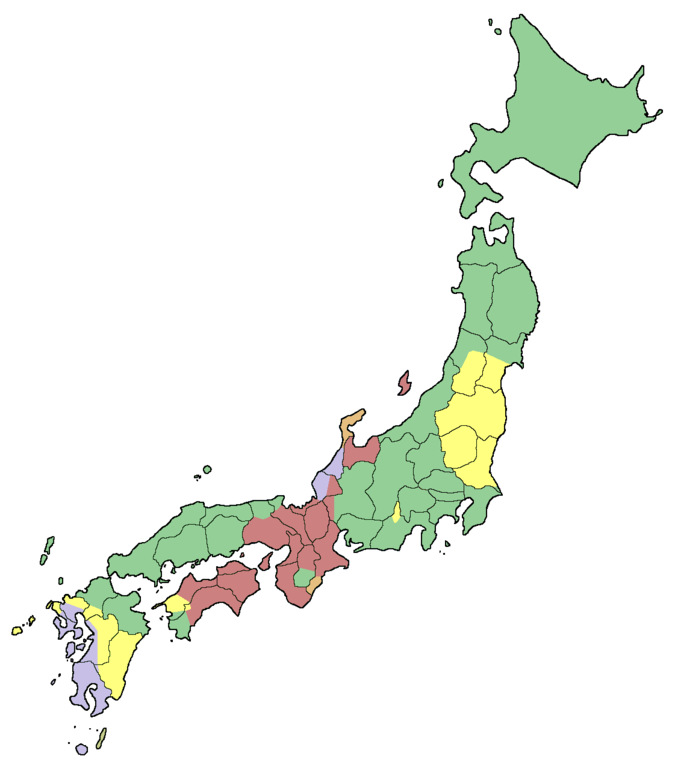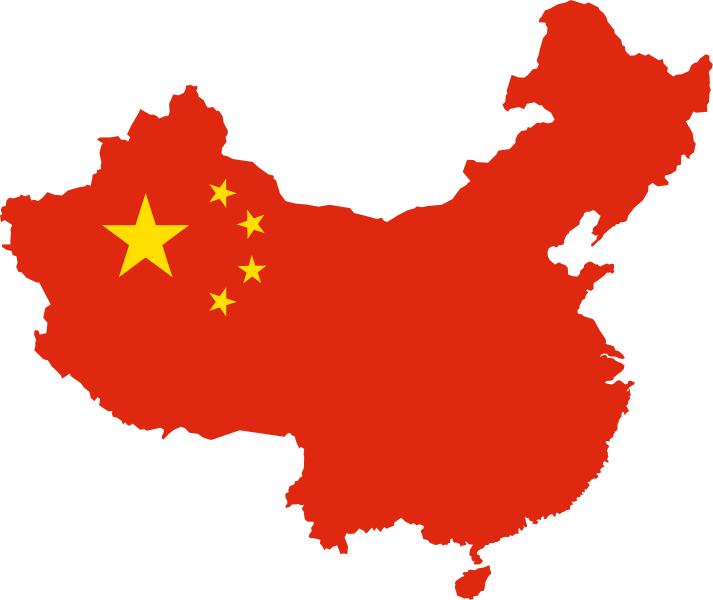Differences Between Japan and China
Despite their geographical proximity, Japan and China are very different countries, with unique historic, political and social features. While China is one of the largest communist countries in the world, Japan is a – rather open – parliamentary constitutional monarchy. Although both countries have rather strong economies, wealth is divided in an equal manner in Japan, while major gaps between rich and poor remain in China. Their engagement at the international level is very different, and their allies and foreign economic partners do not always coincide. Furthermore, given the size differences, the two countries need to employ different types of social and political strategies to coordinate all regions and ensure equal growth.

What is Japan?
While today Japan is considered one of the most advanced countries in the world, it has experienced a long period of political and social isolationism. In fact, modernization initiated only in the mid-1800, when flows of foreign cultures where finally allowed to enter the country. Japan’s economic and military strength continued to grow during the 19th and 20th century – when the country occupied Korea, Taiwan (the then Formosa), Manchuria and the southern part of Sakhalin Island. After attacking US military units, Japan entered into World War II while continuing its expansion in the Asia-Pacific region.
After defeating Japan in WWII, the United States wrote the country constitution and maintained a tight control over the central government for years. In spite of the disastrous conditions of the economy after the war, Japan managed recover and became an internationally recognized economic power. To date, Japan is headed by Prime Minister Shinzo Abe, although the imperial dynasty remains a key symbol of the country.
Key aspects about the country:
- Capital: Tokyo
- Official languages: Japanese
- Ethnicity: 98,5% Japanese
- Religion: Shintoism, Buddhism, Christianism
- Government: Parliamentary constitutional monarchy
- Emperor: Akihito
- Prime Minister: Shinzo Abe
- Area: 377,972 km2
- Population: 126,672,000 (as of 2017)
- Currency: Yen

What is China?
China has centuries of fascinating history, rich of art and civilization. China’s economy developed during the imperial era, even though the 19th and 20th century were marked by devastating famines, unrest and foreign occupations. The Republic of China was established in 1912, but the country was plagued by civil unrest and political instability. The Sino-Japanese war caused the death of millions of Chinese and the country lacked strong political leadership. After the end of World War II, Mao Zedong – leader of the Communist party – established an authoritarian, autocratic system, and imposed a strict and severe control over the life of every citizen. After Mao’s death, its successors focused on economic growth and opened up – even though never officially – to capitalism. Today, political control over the population remains tight, but the country’s economy is one of the fastest in the world, although huge disparities remain between poor and rich, and between urban and rural areas.
Key facts about the country:
- Capital: Beijing
- Official languages: standard Chinese
- Ethnicity: 92% Han
- Religion: Buddhism, Christianism
- Government: one-party socialist republic
- President: Xi Jinping
- Area: 9,596,961 km2
- Population: 1,403,500,365 (as of 2016)
- Currency: Renminbi (yuan)
Similarities between Japan and China
China and Japan are very different countries and the similarities between the two are limited and mainly linked to their geographical proximity:
1. Both countries have been (and are) subject to environmental hazards, in particular typhoons and earthquakes. Furthermore, both in China and Japan there are dormant and active volcanoes – although the Chinese ones have been mostly inactive for the last decades;
2. Both countries suffer of air pollution, with China being the world’s first single emitter of carbon dioxide – one of the main polluting agents. The 2011 nuclear accident in Fukushima, Japan, had a dramatic effect on the level of pollution in the country, but the government is implementing stricter policies to promote sustainability;
3. Both countries are members of international organizations, such as AfDB (Africa Development Bank), ICC (International Criminal Court), ILO (International Labor Organization), G-20, UN (United Nations), UNCTAD (United Nations Conference on Trade and Development), UNESCO (United Nations Educational, Scientific and Cultural Organization), UNHCR (United Nations High Commissioner for Refugees), WHO (World Health Organization), WIPO (World Intellectual Property Organization) and many others. China is also a permanent member of the UN Security Council, while Japan is part of the non-permanent members; and
4. Both countries have an incredibly rich and fascinating history. Their geographic proximity led to wars in the past (namely the Sino-Japanese war), and the two cultures have influenced each other for decades.
Difference between Japan and China
China and Japan are two of the world’s strongest economies, and they are at the frontline of technologic innovation and high-tech progress. However, life in the two countries is very different, and their political and economic institutions are based on different principles.
Difference between Japan and China in terms of Government and politics
the main, striking, difference between the two countries lies in their form of governance. Despite the existence of the imperial dynasty, Japan is a democracy, whereas China remains an authoritarian, communist regime – a one-party system. As such, Japanese citizens enjoy many of the rights that continue to be denied to the Chinese population – which remains under strict control of the communist party. Indeed, in the last few decades, Chinese people have been able to enjoy a renewed degree of personal and collective freedom (which was unthinkable during Mao’s dictatorship), but political participation remains limited and power remains in the hands of the elite of the communist party; and
Difference between Japan and China in terms of Economy and welfare
Although both countries have strong economies – which rank among the most competitive in the world, Japan is – comparatively – a richer country, and the Japanese population enjoys a higher standard of living. After decades of closure and rejection of the capitalist ideas, China has opened up and entered an era of development and market-oriented policies. However, not all citizens have benefited in the same way of the so-called “Chinese style capitalism.” Rural areas remain severely underdeveloped, while urban areas are growing richer. Conversely, wealth is distributed in an equal way in Japan (even though differences between urban and rural areas remain).
Japan vs China
Building on the differences outlined in the previous section, we can identify few other aspects that further differentiate China and Japan. The main ones are highlighted in the table below.
Japan vs China : Comparison Chart

Summary of Japan vs China
Japan and China are two of the main Asian economies and two of the fastest growing powers in the world. Yet, despite their geographical proximity, they have little in common. Japan is a democracy – although the official definition is parliamentary constitutional monarchy – whereas China is a one-party system. The two opposing styles of governance have visible consequences on the population and on the repartition of wealth. In fact, despite being one of the world’s major powers and largest economies, China does not have one of the highest standards of living – whereas Japan does.
After having rejected the capitalist ideal for decades, China has finally opened up to progress and free market ideals, employing an economic system that was later renamed Chinese style capitalism. While the central government maintains strict control over the population and all provinces, local authorities are “free” to employ ad-hoc policies to promote the development and growth of specific areas. Yet, difference and gaps between poor and rich – and even more so between rural and urban areas – are evident. In addition, citizens can enjoy limited personal and collective freedoms. All such discrepancies are less evident in Japan, even though the country has an aging population and relies heavily on trade and exports to complement its lack of natural resources.
- Difference Between Michelle Obama and Melania - January 29, 2019
- Difference Between Trump and Modi - December 4, 2018
- Difference Between Carbon Tax And Cap And Trade - December 4, 2018
Search DifferenceBetween.net :
1 Comment
Leave a Response
References :
[0]Image Credit: https://upload.wikimedia.org/wikipedia/commons/thumb/5/5c/Flag-map_of_the_People%27s_Republic_of_China.svg/713px-Flag-map_of_the_People%27s_Republic_of_China.svg.png
[1]Image credit: https://upload.wikimedia.org/wikipedia/commons/thumb/5/5c/Flag-map_of_the_People%27s_Republic_of_China.svg/713px-Flag-map_of_the_People%27s_Republic_of_China.svg.png
[2]Diamond, Larry. "The coming wave." Journal of Democracy 23.1 (2012): 5-13.
[3]Minzner, Carl. "China after the reform era." Journal of Democracy 26.3 (2015): 129-143.
[4]Osawa, Juro et al. “The rise of China’s Innovation Machine.” The Wall Street Journal, January 16, 2014.

I enjoy the term of history between the two country. I never knew they where two different countries. i love the both country. Its clear.